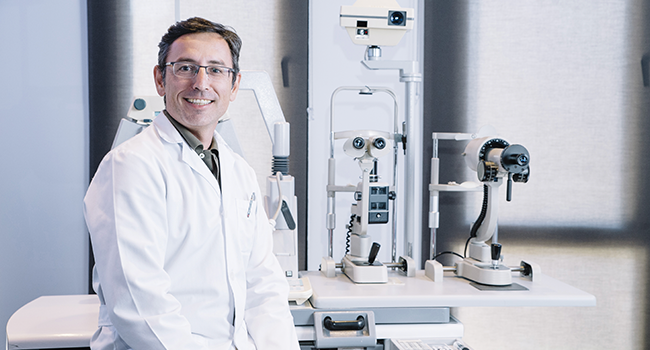Check Out the Best Optometrist Chino for Comprehensive Eye Care
Check Out the Best Optometrist Chino for Comprehensive Eye Care
Blog Article
Checking Out the Latest Technological Innovations in Optometry and What They Mean for Eye Doctors
From the precision of Optical Comprehensibility Tomography to the nuanced understandings offered by AI-driven analysis tools, these technologies are establishing brand-new requirements in patient assessment and therapy. As these improvements penetrate the practice, eye doctors are encountered with the difficulty of embracing these tools to improve individual outcomes.
Technologies in Diagnostic Tools
Advancing the field of optometry, innovations in diagnostic tools have revolutionized the method eye care specialists evaluate and diagnose eye conditions and visual problems. The past years has actually observed substantial technical improvements, making it possible for more comprehensive and precise evaluations.
Another trick development is the intro of sophisticated corneal topography systems, which map the surface area curvature of the cornea with accuracy. These tools are particularly helpful for fitting contact lenses and diagnosing corneal problems. Electronic retinal imaging has actually transformed traditional ophthalmoscopy, supplying in-depth, panoramic sights of the retina that assist in comprehensive aesthetic examinations.
The development of wavefront aberrometry has actually likewise been crucial, allowing the evaluation of refractive mistakes with unparalleled precision (Eye Doctor). This modern technology helps in tailoring rehabilitative lenses and improving medical outcomes for refractive surgical treatments. Jointly, these analysis innovations empower optometrists to provide exceptional client treatment, making certain very early treatment and customized treatment strategies, eventually enhancing visual health and wellness outcomes
AI in Person Management
Building on the foundation of cutting-edge diagnostic tools, the incorporation of expert system (AI) in patient monitoring stands for a transformative jump for optometry. AI systems are progressively employed to improve effectiveness, accuracy, and personalization in individual care. By analyzing large quantities of information, AI can identify patterns and predict possible eye conditions, making it possible for optometrists to customize interventions more effectively. This ability is essential in handling persistent eye conditions such as glaucoma and diabetic retinopathy, where early discovery and continual surveillance are key.
Furthermore, AI-driven platforms facilitate streamlined person communications and administrative procedures. Automated scheduling, digital appointments, and customized follow-up plans not just improve patient contentment yet likewise optimize time monitoring for experts. These systems can triage people based upon the necessity of their conditions, making sure that those in important need receive prompt attention.
Moreover, AI boosts decision-making by supplying eye doctors with evidence-based referrals and therapy paths. By incorporating data from electronic health records, AI tools use insights that inform clinical decisions, minimizing the risk of errors and enhancing person results. As AI remains to develop, its role in patient administration will likely broaden, improving the landscape of optometric treatment.
Breakthroughs in Retinal Imaging
In the world of optometry, retinal imaging has actually witnessed exceptional technical developments that are enhancing diagnostic capacities and patient care. Advancements such as Optical Comprehensibility Tomography (OCT) and fundus digital photography have reinvented how optometrists examine the retina and picture. OCT, specifically, provides high-resolution, cross-sectional photos of the retina, permitting the detailed exam of its layers. This capacity is important for early discovery and administration of conditions like glaucoma, diabetic retinopathy, and age-related macular degeneration.
Boosted imaging techniques like OCT angiography are further refining analysis accuracy. This non-invasive technique maps blood circulation in the retina, using crucial insights into vascular health without the demand for color shots. In addition, adaptive optics innovation is being integrated right into retinal imaging systems to correct eye aberrations, supplying unprecedented picture quality. Such innovations help with the identification of minute retinal changes that can represent illness development.
Moreover, improvements in expert system are boosting retinal imaging by making it possible for computerized analysis of large datasets. These systems aid eye doctors in determining patterns a sign of pathology, thus improving diagnostic precision and performance. Collectively, these advancements are changing retinal imaging right into a cornerstone of modern-day eye care, enhancing end results and broadening healing opportunities.
Teleoptometry's Expanding Role
Teleoptometry is progressively ending up being an important component of eye treatment, driven by improvements in data and analysis devices. As optometry welcomes electronic makeover, teleoptometry facilitates remote appointments, allowing optometrists to prolong their solutions beyond typical limits. This is particularly beneficial in rural and underserved locations where access to specialized eye care is typically limited. By leveraging high-resolution video conferencing and progressed retinal imaging, optometrists can perform comprehensive eye tests from afar, making certain prompt medical diagnosis and treatment.
The integration of artificial intelligence (AI) further boosts teleoptometry, making it possible for the analysis of aesthetic information and aiding in the detection of ocular conditions look at this web-site such as glaucoma and diabetic retinopathy. AI-powered algorithms can rapidly translate intricate imaging data, offering optometrists with important understandings that reinforce medical decision-making.
In addition, teleoptometry supports connection of treatment with smooth combination with electronic wellness documents (EHRs), enabling optometrists to preserve thorough client backgrounds. This makes certain that clients obtain individualized and regular treatment even when speaking with different experts.
In spite of these advantages, obstacles stay, including making certain data safety and security and handling client assumptions. Teleoptometry stands for a considerable stride towards even more available, reliable, and patient-centered eye treatment. As innovation progresses, its function is positioned to expand even more.

Future Fads in Eye Care
A myriad of ingenious patterns is readied to improve the future of eye care, driven by technological innovations and the developing needs of patients. One considerable pattern is the combination of expert system (AI) in diagnostics, which assures to boost the accuracy and effectiveness of eye assessments. AI algorithms can evaluate substantial quantities of information from retinal pictures, potentially identifying conditions like diabetic person retinopathy and glaucoma earlier than standard techniques.
In addition, individualized medication is obtaining grip in optometry, with hereditary screening notifying tailored treatment plans. This method aims to optimize patient results by tailoring interventions to specific hereditary accounts. Wearable innovation, such as wise call lenses, is likewise coming up, using real-time monitoring of intraocular pressure or glucose degrees, hence providing constant insights into eye and systemic wellness.
The adoption of increased fact (AR) and virtual fact (VIRTUAL REALITY) in training and person education is another arising fad. These innovations offer immersive experiences that can improve understanding site here and abilities both for optometrists and clients. As these patterns progress, optometrists must remain abreast of technical developments to offer innovative treatment, ensuring enhanced patient outcomes and satisfaction in the dynamic landscape of eye treatment.
Verdict

Jointly, these diagnostic innovations empower optometrists to deliver remarkable client care, making sure very early intervention go to my site and tailored therapy methods, inevitably improving visual health and wellness results.

As these innovations proceed to develop, eye doctors must adjust and incorporate them right into method, inevitably optimizing process effectiveness and raising the requirement of eye treatment delivered to people.
Report this page